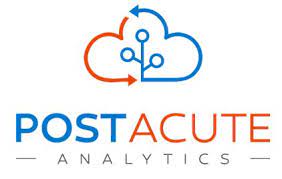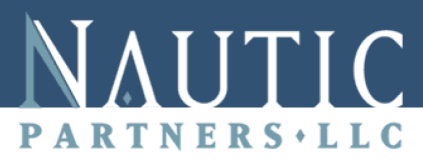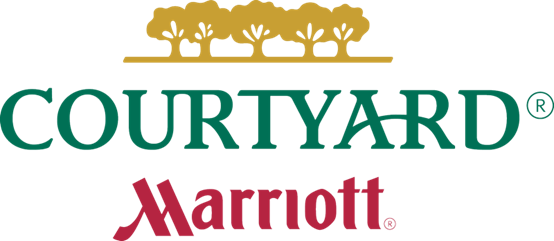Strategies for an Exit and a PEO Transition to an HRO
Typically, the average company utilizing PEO services has fewer than 20 employees, which means that as the number of employees increases, the PEO model begins to break down because PEO costs grow too high, the technology no longer aligns with what a larger organization needs, and there are too many employees to be effectively managed by a PEO. Often, the technology employed by a PEO is misaligned with the HR complexities of a larger organization. A PEO transition allows companies to choose different HR information systems that can support their growing organization.
In addition, companies may be seeking to establish their own brand identity. As a co-employer, HR-related documents like onboarding, payroll, etc., will often be branded with both the PEO and the client’s information. As a company grows, it will usually become more interested in carving out its own brand identity so that employees don’t get confused about whether they’re working for the company or the PEO.
A National PEO may also find it difficult to provide the level of service an organization with more employee’s needs. When a small company only has a handful of employees for which HR administration services are needed, most likely, the company will not require frequent support from the PEO. However, as the organization grows more complex, there will be more HR issues, more frequent hiring, greater turnover, and other factors that require a higher level of support than a PEO can offer.
Ensuring a Successful Exit and Transition to an HRO
When exiting a National PEO, the process can be challenging, especially for companies that have never gone through the process of transitioning from a PEO. The best way to ensure that the transition is successful is to find an HRO who has extensive experience completing the process and has a dedicated PEO transition service. Finding out if an HRO has this experience should be easy, either through the HRO’s website or a quick call to see if it is a service they provide. If the HRO hasn’t been assisting clients with PEO transition for at least ten to twenty years, there’s a good chance that they will be learning as they go.
Companies should look for an HRO that understands the nuances and best practices for this type of transition. For example, Corban OneSource has developed a proprietary transition plan that includes detailed standard operating procedures and best practices to ensure that the transition is smooth and successful. Over the last quarter-century, Corban OneSource has been able to lead companies through PEO transitions and, as a result, understands where all the common pitfalls are in the process.
Common HR Mistakes WhenExiting a PEO
Unfortunately, companies often run into issues when trying to exit a National PEO if they’re unprepared for the extensive work it will take. The first mistake is that many companies fail to recognize what the PEO is actually doing for them. Within the PEO, they are responsible for managing a wide range of HR responsibilities that small companies are often unaware of–there are many moving parts behind the scenes that companies without sufficient internal HR resources are ill-equipped to manage.
In addition, companies are often unaware that they need to apply for state income tax and unemployment tax numbers in each state they have employees in. It’s easy for companies who don’t understand this obligation to get behind on this requirement. It can also be challenging for companies to understand live-work rules and ensure they’re set up properly in an HRIS for employees who live in one jurisdiction but work in another.
Let’s address your complex HR challenges together.
Benefits of choosing an HROfor your Company
Improved Capacity
Outsourcing HR to a third party enables companies to leverage an established team of HR professionals. These teams can easily handle fluctuations in HR services, the number of employees, and other shifts that would be difficult to handle in-house. For an HRO, these capabilities are readily available, which means they don’t need to make hires or find other resources as a company’s HR functions evolve.
Comprehensive Benefits Administration
HR managers typically spend between 25% and 30% of their time managing employee benefits. However, these managers also need to consider protecting the company’s bottom line – balancing benefits administration with other, more strategic tasks. Because of this, outsourcing HR functions can provide companies with a more efficient way to manage benefits administration. An HR outsourcer is often better equipped to negotiate contracts and buy in volume that can help control costs for employers. At the same time, an HR outsourcing partner is often able to offer more comprehensive services to employees than they would be able to on their own. And, unlike a National PEO, an HRO provides employers the flexibility and freedom to choose from a wide array of benefits providers.
Greater Flexibility
As companies have a demand for a higher volume of HR services, it can be difficult or expensive to hire the right staff to meet those needs. Instead, outsourcing HR functions to a third party can ensure all HR needs are met. At the same time, a good outsourcing partner will have the ability to scale their services up or down depending on the number of employees at a given time, whether a company has recently made hires or downsized its staff. This helps organizations control costs and maintain the necessary level of HR services.
Expanded Services
Choosing to outsource HR functions means that a company can often leverage an expanded range of HR services than what may be available in-house. From designing employee handbooks to monitoring compliance with HR law and managing payroll, HR outsourcers often provide an array of valuable HR services.
HR Expertise
Outsourcing HR functions to a third party provides access to valuable HR expertise. Many companies may not have the right HR talent in-house, but hiring that talent full-time can be cost-prohibitive. Especially as a company grows and tasks such as legal compliance, payroll, and benefits administration grow more complex, having access to experienced HR personnel can be a valuable risk mitigation tool. An HRO should also be able to provide superior support than a PEO as well. A good HRO will ensure that each HR expert can support the right volume of support requests and employees.
Improved Compliance
Employment regulations are continually changing. HR outsourcers often have a more complete, in-depth knowledge of employment laws and how they apply to managing HR. Outsourcing HR functions can help companies ensure they maintain compliance with these laws, protecting both themselves and their employees.
Control Costs
HR costs can add up, from hiring HR employees to investing in training and improving retention. Fortunately, working with an HR outsourcer can help keep these costs under control. Instead of hiring specialized HR staff, companies can outsource their HR needs to reduce the cost of hiring, onboarding, and training new staff. At the same time, an HR outsourcer can help to improve retention and reduce turnover, providing a return that can grow a company’s bottom line
Let’s Address Your PEO Exit and Transition Plan Together.
Why ChooseCorban OneSource?
Transitioning from a National PEO to an HRO can be a great option for companies looking for a better way to manage HR administration. For nearly three decades, Corban OneSource has been helping companies with 75 to 6,000 employees transition out of a PEO and into an HRO. With an expert like Corban OneSource and our proprietary methods on your side, we’ll work with you to ensure that the transition is smooth and seamless.
Once you’ve transitioned out of your former National PEO, we’ll help you keep your HR department on track with ongoing administrative support. From benefits and payroll to general HR administration, Corban OneSource’s US-based HR experts provide timely, comprehensive support so that your HR leaders can focus on strategic priorities that will drive the business forward.
Our HR administration services are customized to fill your organization’s unique requirements. If you’re ready to learn more about how we can help you transition from a National PEO to an HRO, contact our expert team today.
Schedule a free expert consultation.
Find out what’s possible for your company’s Exit and Transition from a PEO to an HRO (and bottom line).
"*" indicates required fields











